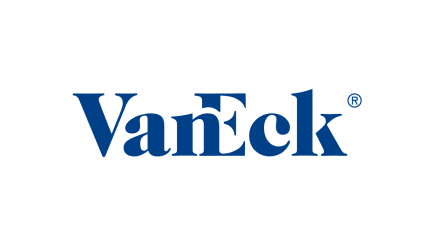by Natalia Gurushina
Chief Economist, Emerging Markets Fixed Income
Global Drivers for EM Assets
The last day of March brought more signs that two major market narratives are still in play. The global inflation momentum continues to moderate (albeit with some nuances – like stickier than expected core inflation in Europe and some emerging markets (EM)), while China’s recovery keeps gaining traction. This is good news for EMs – as some are more correlated with the U.S. Federal Reserve’s rate cycle and others are more correlated with China’s rebound/growth cycle.
China Recovery
China’s latest domestic activity gauges (Purchasing Managers Indices) support the consensus optimism regarding this year’s growth outlook (5.3% – above the official growth target of about 5%). Key PMI components stayed in expansion zone, with some showing sizable improvements – including services and construction (see chart below). The surging construction PMI reflects a concerted effort to boost infrastructure investments, but could also be indicative of the stabilizing housing sector (which, in turn, a major supporting factor for consumer confidence). The release, however, showed that external growth headwinds might be getting stronger – tighter lending conditions in developed markets (DM) is one obvious avenue – which is why we expect the “supportive yet restrained” policy stance to remain unchanged for now. We also would like to remind that authorities responded very quickly to potential contagion risks associated with the banking mini-crisis in DMs in the middle of the month (in the form of an earlier than expected cut in the reserve requirements for banks).
EM Peak Rates
China’s rebound could create additional inflation pressures going forward – for example, via commodity prices. Global uncertainties like this widen the range of potential growth and inflation outcomes, and this is a reason that keeps various EM central banks on the cautious side as regards policy easing, even when inflation had already peaked. The Colombian central bank stated yesterday that policy stance will remain restrictive for some time, and the Mexican central bank indicated that the balance of inflation risks is still biased to the upside. Both central banks delivered the expected 25bps rate hikes yesterday, and the market thinks that another small “farewell” hike might still be on the table. Stay tuned!
Chart at a Glance: China Activity Gauges Support Optimistic GDP Forecasts

Source: Bloomberg LP.
Originally published 31 March 2023.
For more news, information, and analysis, visit the ETF Strategist Channel.
PMI – Purchasing Managers’ Index: economic indicators derived from monthly surveys of private sector companies. A reading above 50 indicates expansion, and a reading below 50 indicates contraction; ISM – Institute for Supply Management PMI: ISM releases an index based on more than 400 purchasing and supply managers surveys; both in the manufacturing and non-manufacturing industries; CPI – Consumer Price Index: an index of the variation in prices paid by typical consumers for retail goods and other items; PPI – Producer Price Index: a family of indexes that measures the average change in selling prices received by domestic producers of goods and services over time; PCE inflation – Personal Consumption Expenditures Price Index: one measure of U.S. inflation, tracking the change in prices of goods and services purchased by consumers throughout the economy; MSCI – Morgan Stanley Capital International: an American provider of equity, fixed income, hedge fund stock market indexes, and equity portfolio analysis tools; VIX – CBOE Volatility Index: an index created by the Chicago Board Options Exchange (CBOE), which shows the market’s expectation of 30-day volatility. It is constructed using the implied volatilities on S&P 500 index options.; GBI-EM – JP Morgan’s Government Bond Index – Emerging Markets: comprehensive emerging market debt benchmarks that track local currency bonds issued by Emerging market governments; EMBI – JP Morgan’s Emerging Market Bond Index: JP Morgan’s index of dollar-denominated sovereign bonds issued by a selection of emerging market countries; EMBIG – JP Morgan’s Emerging Market Bond Index Global: tracks total returns for traded external debt instruments in emerging markets.
The information presented does not involve the rendering of personalized investment, financial, legal, or tax advice. This is not an offer to buy or sell, or a solicitation of any offer to buy or sell any of the securities mentioned herein. Certain statements contained herein may constitute projections, forecasts and other forward looking statements, which do not reflect actual results. Certain information may be provided by third-party sources and, although believed to be reliable, it has not been independently verified and its accuracy or completeness cannot be guaranteed. Any opinions, projections, forecasts, and forward-looking statements presented herein are valid as the date of this communication and are subject to change. The information herein represents the opinion of the author(s), but not necessarily those of VanEck.
Investing in international markets carries risks such as currency fluctuation, regulatory risks, economic and political instability. Emerging markets involve heightened risks related to the same factors as well as increased volatility, lower trading volume, and less liquidity. Emerging markets can have greater custodial and operational risks, and less developed legal and accounting systems than developed markets.
All investing is subject to risk, including the possible loss of the money you invest. As with any investment strategy, there is no guarantee that investment objectives will be met and investors may lose money. Diversification does not ensure a profit or protect against a loss in a declining market. Past performance is no guarantee of future performance.







